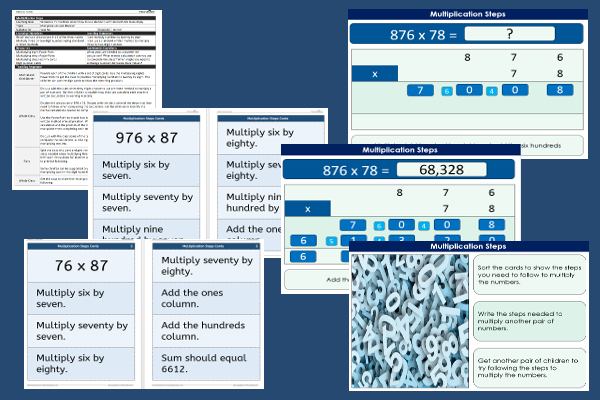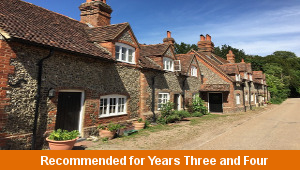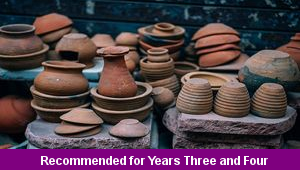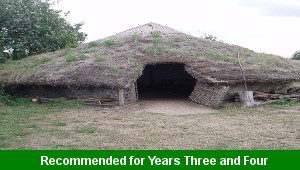Lesson Three – Multiplication Steps

This maths teaching pack for Key Stage Two gets the children to identify and sequence matching sets of instructions about how to use standard written methods of calculation to multiply pairs of three by two digit numbers.
The class can explain and model how to layout a written multiplication calculation correctly when solving number problems using abstract or contextual scenarios.
Download this teaching pack including a lesson plan, classroom activities and an interactive presentation to teach the children to identify and sequence matching sets of instructions about how to use standard written methods of calculation to multiply pairs of three by two digit numbers
Activities in this teaching pack include differentiated sets of cards to identify and record the sequence of instructions that can be used to multiply pairs of three by two digit numbers using standard written methods of calculation for multiplication.
The interactive presentation gets the children to explore how to sequence instructions about how to use standard written methods to multiply three by two digit numbers.
This lesson is part of a maths scheme of work to get the children to practise using standard written methods for multiplication to solve abstract and real world problems. There are teaching activities for shared learning, differentiated worksheets to support independent learning and interactive presentations to introduce concepts and key skills.
-

Cities, Towns and Villages
Research and present the history of a range of different buildings and people that are part of the local community using a school exhibition
-

Recycling
Research and present some of the benefits and disadvantages that can be produced when recycling different materials at home and in school
-

Viking Pots
Develop and refine a range of different art and design techniques when working with clay to make pots that represent Viking culture and traditions
-

Bronze Age
Research and illustrate how life in Britain developed and changed during the Bronze Age including the growth of communities and trade
